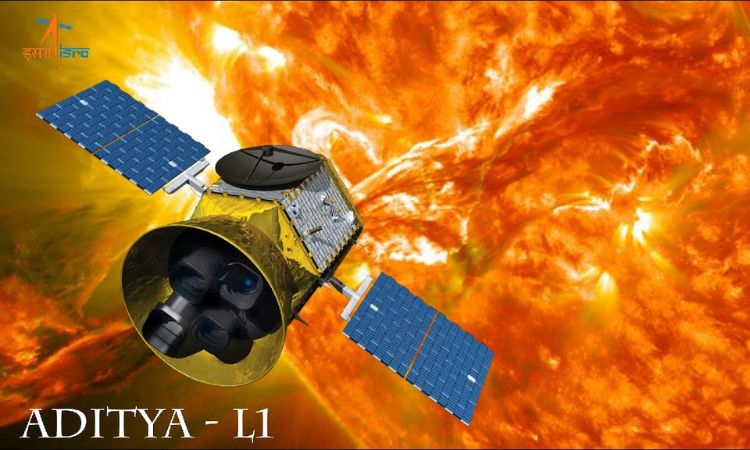“ISRO’s Aditya-L1 solar mission, India’s inaugural foray into solar exploration, launches today from Sriharikota, Andhra Pradesh. Positioned 1.5 million km away from Earth at Lagrangian Point 1, Aditya-L1 will continuously observe the Sun, shedding light on solar activities’ real-time impact on space weather. With seven specialized payloads, it aims to unravel the secrets of the solar corona, solar wind, and more. ISRO’s trusted XL variant of the PSLV rocket powers this historic mission, opening new frontiers in space research.”

The Indian Space Research Organisation (ISRO) is ready to launch the Aditya L1 mission today at 11:50 a.m., from the Sriharikota launch pad in Andhra Pradesh. This marks India’s first solar mission.
The Aditya L1 spacecraft will carry seven instruments to conduct a study of the sun. Four of these instruments will observe sunlight while the remaining three will measure plasma and magnetic fields in time.
The spacecraft will be positioned in a halo orbit around Point 1 (L1) which is located 1.5 million km away from Earth in the direction of the sun. It is expected to cover this distance over a period of four months.
Aditya L1’s orbit will keep it 1.5 million km away from Earth always facing towards the Sun, which accounts for 1% of the distance between Earth and Sun. However, it won’t directly. Get too close to the Sun.
This strategic position allows Aditya L1 to continuously monitor the sun without being affected by eclipses or occultation events enabling scientists to study activities and their influence on space weather in time.
The data collected by this spacecraft will contribute towards understanding the sequence of processes leading up to events and provide insights, into drivers of space weather phenomena.
The primary goals of India’s mission include investigating the physics behind the corona and how it is heated, studying the acceleration of solar wind understanding the dynamics of the solar atmosphere examining the distribution and temperature anisotropy of solar wind, and exploring the origins of Coronal Mass Ejections (CME) and flares as well, as their impact on near earth space weather.
Aditya L1 will continuously observe the sun without being affected by eclipses or occultation. This will allow scientists to study activities in time and better understand their influence on space weather.
The data collected by this spacecraft will also assist in identifying the sequence of processes that lead to events contributing to a deeper comprehension of space weather drivers.
For the Aditya L1 mission, ISRO will utilize India’s Polar Satellite Launch Vehicle (PSLV) in its XL variant. The PSLV C57 rocket stands at a height of 44.4 meters, with a lift-off mass of 321 tons. It will carry the Aditya L1 spacecraft into orbit. The rocket scheduled for launch on Saturday is equipped with strap-on motors containing fuel quantities.
Where to watch LIVE: You can watch the launch of Aditya-L1 live on:
ISRO Website https://isro.gov.in
Facebook https://facebook.com/ISRO
YouTube https://youtube.com/watch?v=_IcgGYZTXQw
DD National TV channel from 11:20 Hrs. IST.















